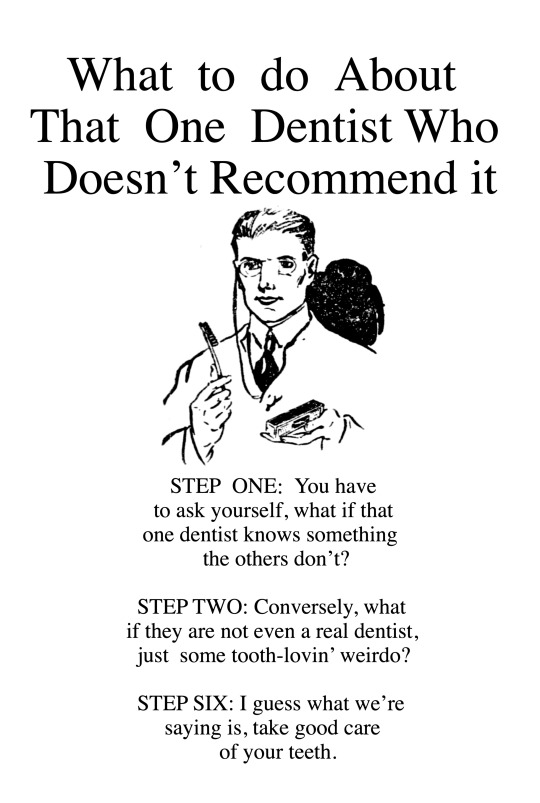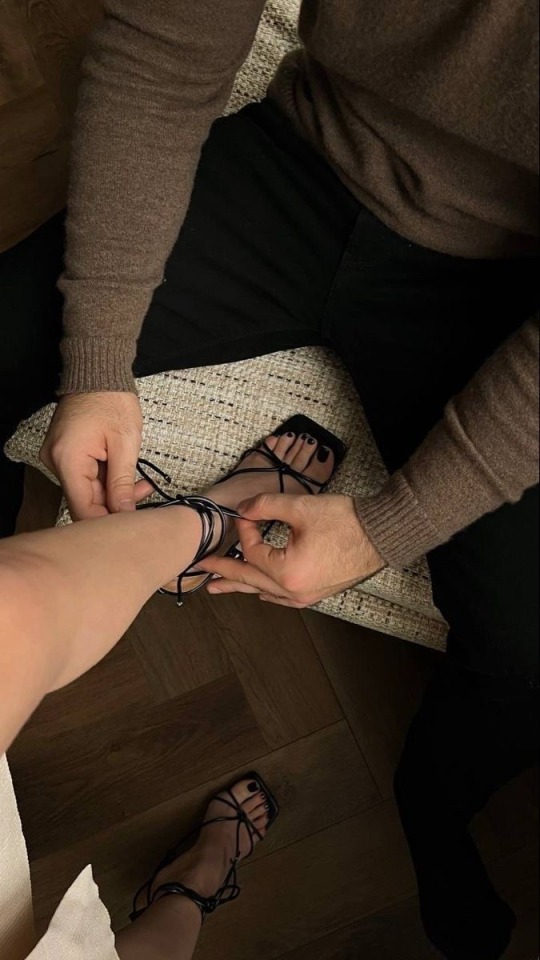#tricks
Text

#What to do About the One Dentist Who Doesn’t Recommend it#tips#tricks#life hacks#helpful hints#advice#dentist#teeth#TW dentist#TW teeth#unreality#anxiety
119 notes
·
View notes
Text
When you finally hit the trick after countless tries
35K notes
·
View notes
Text
Some Tumblr Tricks
1. Get a random blogpost from a blog
You like the content of a blog but theres just so much content and you want to see some older stuff? Great, just append /random to the URL and a random blogpost from that blog will be shown:
BLOGNAME.tumblr.com/random
2. Use Keyboard Shortcuts
When you are on your dashboard you can use the following keybinds:
J -> Scroll forward
K -> Scroll backward
L -> Like the current post
N -> See the number of notes
Shift + E -> Add post to your queue
Shift + R -> Fast reblog
Z + Tab -> Quickly switch between dashboard and blog
Z + C -> Quickly compose a post
Space -> View photoset in a lightbox or start playing a video post
3. More URL tricks
Show all posts with a specific tag:
BLOGNAME.tumblr.com/tagged/<tag>
Sort entries with a specific tag in chronological order
BLOGNAME.tumblr.com/tagged/<tag>/chrono
Get all Posts from a date
BLOGNAME.tumblr.com/day/JJJ/MM/TT
PS: Do not forget you can go totally crazy with the custom theme editor by for example adding a music player https://www.scmplayer.net/ or whatever. Make personal websites cringe again!
1K notes
·
View notes
Text
In case you wondered, I haven't suddenly become sensible since I last posted!
21K notes
·
View notes
Text






source
#stim#people#person#staff#spin#tricks#eye contact#bottom row is close ups and slightly slower#couldn't decide which set i liked better so you get both
507 notes
·
View notes
Text

Big Raphie! Another part of the skateboard series! Leo is nextttttt.
2K notes
·
View notes
Text
¡Magia!
608 notes
·
View notes
Text
Get this man off the board he keeps rolling way too many ones
199 notes
·
View notes
Text

who’s with me????
362 notes
·
View notes
Text

130 notes
·
View notes
Text

#666#metalinislenmishali#gif#butterfly knife#tricks#bw#black and white gif#tumblr#tumblr gifs#aestethic#satan#horror#horror gif#horror blog
431 notes
·
View notes
Video
Source

5K notes
·
View notes
Text




Book Review: Book 1: Stop People Pleasing (a 9-part series by Patrick King, “Be Confident and Fearless.”)
I’m reading a 9-part series by Patrick King, “Be Confident and Fearless.” His books talk about becoming assertive, saying no, not people pleasing anymore and being confident. Generally, such books are quite generic but I found his take on the subject interesting. His techniques to handle certain situations seem to be quite doable too. His techniques have been highlighted in bold.
Book One: “Stop People Pleasing”
A people-pleaser is worried about rejection. They have a need, as we all do, to be accepted and treasured—to be loved. But in people-pleasers, this need is amplified to the extent that they will bend over backward just to not lose that love or acceptance. This is more invalidating than giving an honest opinion.
-
In reality, people-pleasers continued promises and inaction just tick their friends off, as it becomes apparent that they are willing to be dishonest and only say what people want to hear.
-
They’re not really doing what they do to improve someone else’s life—they just want to feel more positive about themselves.
-
Living under the limitations of our own viewpoint, we tend to think everyone in our circle is looking at and judging how we look and behave. At most, maybe a couple of people are paying attention to most of your moves, and they’re likely people you’re already close to who are supposed to know you better than anyone else.
-
When you’re so consumed with the perceived needs of others, you’re not paying yourself any attention. You could be overlooking or ignoring things you need to do to take care of yourself.
-
Avoiding confrontation for fear that it might only make things worse ironically results in the very outcomes it’s meant to deflect. The absence of confrontations doesn’t mean your relationship is all healthy, and the presence of confrontations doesn’t mean your relationship has gone to the dogs.
-
The BLUE model is a specific CBT strategy developed by PracticeWise to help counter negative thinking. BLUE is an acronym that stands for the kind of extremely negative thoughts you should recognize in yourself when they do pop into your head. “B” stands for blaming myself, “L” is looking for bad news, “U” means unhappy guessing, and “E” represents exaggeratedly negative thoughts.
-
What many people-pleasers fail to see is that sacrificing so much of themselves in pursuit of serving everyone else around them is sabotaging their very capacity to continue being there for others when it truly matters.
-
Rejecting an invite is not the same as rejecting your friend and that prioritizing your own peace of mind by just settling into a restful weekend is totally okay.
-
Ask yourself, “What are the things I do to be happy?” or “What are the core beliefs I have about my worth as a person?”
-
Exposure therapy is the process of deliberately placing yourself in situations that cause you fear and anxiety. You’ll need to immerse yourself in your feared situations in a gradual and progressive manner, starting from situations that cause the least anxiety and later advancing to those that cause the most intense feelings of fear.
-
Creating your fear hierarchy. The fear hierarchy is an ordered list of situations that elicit your fears and anxieties.
-
The first habit we must develop is the habit of self-awareness. We don’t understand why we people-please, and we’re not aware when we’re doing it.
This begins with questioning the motives for your actions: “Why exactly am I going out of my way for this person?” “Do I genuinely care for them, or am I just afraid of what might happen without them?” “Would I be doing this out of free will, or am I doing it for someone else?”
Take note of the moment you’re starting to feel internal resistance. When that happens, stop everything and question why you’re doing it.
-
The second habit to cultivate is the habit of personal autonomy. An autonomous person knows what they truly believe and why they believe it. But the differences that you’ve valued your own opinion over that of others. Or you’ve at least valued it equally and not by habit put your own opinion as inferior to that of others.
-
That’s why it’s important to get into the habit of expressing yourself honestly. The more you communicate where you stand, the more people will know where you’re coming from (and what your limits are). After all, people can’t read minds, and to expect others to know what you want is an impossible task.
-
Remain strong under pressure. When you stop people-pleasing, you will face some angry reactions. It’s not necessarily their fault because you have conditioned their expectations. But this is where you must not fold under pressure, like you previously would have. It only takes five seconds of extreme willpower, and it gets easier every time thereafter.
-
How to set boundaries:
1. Determine your core values
2. Change yourself and only yourself. You dont control other people
3. Set consequences of someone else breaking your boundaries. Write down the boundaries you have, the actions others might take that trespass those boundaries, and exactly what you will do when they’ve violated your boundaries.
4. Communicate your boundaries to others in very exact terms. Make sure everybody’s very, very clear on what your limits are.
-
If you tell yourself “I can’t,” you’re simply reminding yourself of the limitations you’ve set for yourself. You’re creating a feedback loop in your brain that tells you that you can’t do something that you would normally want to do.
When you tell yourself “I don’t,” you’re creating a feedback loop that reminds you of your power and control of the situation. You’ve given yourself a line in the sand that takes the situation out of your hands. Your choice was premade to say no and thus you can stick to it more easily.
#c suite#powerful woman#ceo aesthetic#personal growth#that girl#productivity#strong women#getting your life together#feminine energy#balance#books#patrick king#book review#people pleaser#people pleasing#can’t say no#boundaries#setting boundaries#tips#tricks#techniques
368 notes
·
View notes
